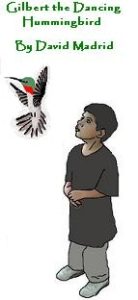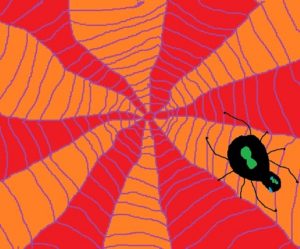Rastas Boodrow was just like many other little boys in that he loved games. All kinds, but especially sports. He was good at sports. He loved computer games as well, but Rastas didn’t own any.
Rastas preferred to play outside anyway.
Rastas was poor. His parents earned minimum wage. His dad worked two jobs, but the family never got ahead. Financially, they were losing pace, not even running in place, one illness away from homelessness.
Rastas was different from most the neighborhood kids because he was Jamaican. He was darker than his peers; he had dreads, and he dressed in second-hand clothes and wore old beat-up sneakers.
Whereas, most children his age — Rastas was 7 — would be ostracized for their poverty by their classmates, Rastas was not.
Rastas was popular. He was an exceptional athlete. He was fast. He was strong. He had a winner’s heart. Everybody wanted to be on Rastas’ team.
Rastas was also smart. He liked to read books, and he loved the intricacies of math. Not just adding and subtracting, but now multiplying and dividing, fractions and decimals, meters and milliliters.
Oh yes, he was advanced for his age when it came to math. He was born with numbers running through his mind. He was a genius who already pondered the possibility of endless mathematical probabilities. Maybe that is why he was a bit weird.
Rastas had a compassionate heart. He loved deeply.
He loved his parents even though there were no gifts for him or his sister Amancia under the tree. Christmas was two days away, and nothing.
Rastas knew something would appear on Christmas night from his parents.
It would be clothes or shoes. The real gift would come from Santa Claus. Rastas and his sister would rely on Santa Claus for a perfect gift just like they did every year.
This year, Rastas wasn’t confident he made Santa’s nice list. He dreaded landing on the naughty list. Especially when he wanted a special gift.
He wanted a red bicycle. That wasn’t too much to ask was it?
Rastas imagined the many possibilities a bike would give. He would be mobile, go where he pleased.
No more rides to the library. Rastas didn’t own a phone, so he read books. The library was a magical place, and Rastas didn’t understand why he didn’t see more young people there. Rastas also read above his age level. That’s how he knew so much about math.
He also loved the fantasy books. He imagined he was in the worlds he read about. Leaving this world for a while was comforting.
Rastas was at the age that little boys begin to develop a strange sense of humor that can sometimes lead to cruel pranks.
Though he loved his sister Amancia with all his being, he sometimes pranked her. She didn’t hold it against him. Amancia was just as her name reflected: one who loves unconditionally. There was no doubt Santa would be good to her.
Rastas also didn’t obey his parents as he should.
They came home tired and still made dinner and helped with homework. And how did Rastas repay them? By doing dumb stuff like hiding his clothes under his bed rather than hanging them in the closet.
Now I know that sounds stupid. Rastas didn’t know why he did it; he just did it.
So it left him no choice but to appeal to the big man himself: Santa Claus. How would he get Santa’s attention long enough to explain? He didn’t have a ride to take him to the mall, where he knew Santa hung out.
That’s when one of those mathematical possibilities presented itself to young Rastas. He would study the fireplace and its flue. Measure it, and turn his problem into an equation. Therein was the answer.
So my friends, read about Rastas’ solution to his problem in “Rastas Boodrow: A Christmas Story“.
David Madrid
Contact: David Madrid
© 2019 FabulousFables.com







 How handsome are your gauzy wings, how brilliant are your eyes!
How handsome are your gauzy wings, how brilliant are your eyes!
![365px-Aesop_woodcut_Spain_1489[1]](https://www.fabulousfables.com/wp-content/uploads/2016/04/365px-Aesop_woodcut_Spain_14891-183x300.jpg)